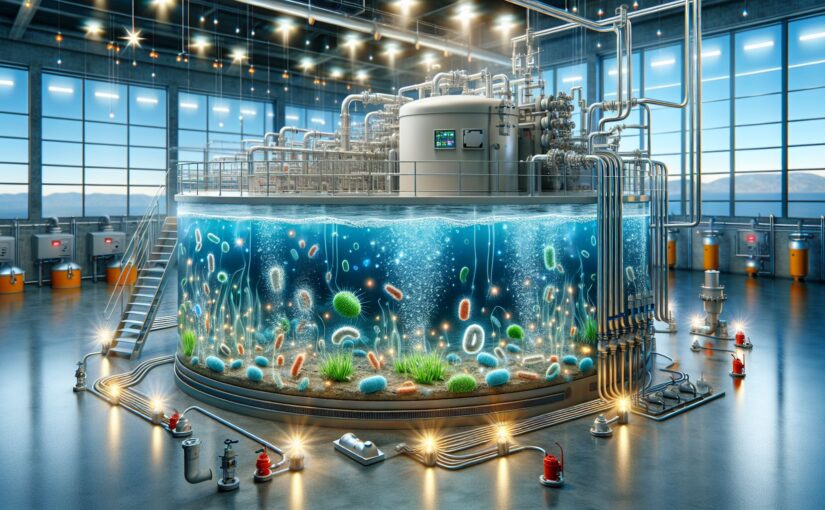Wastewater treatment is an important subject in our current context of accelerated urban growth and environmental concerns. Traditional methods often involve the use of chemicals and high energy consumption during the treatment processes. Bioelectrochemical systems (BESs) emerge as a promising alternative, as they leverage the capabilities of microorganisms to treat wastewater while recovering energy in a sustainable manner.
Understanding Bioelectrochemical Systems
BESs are systems that generate electricity directly from organic and inorganic matter using the metabolic activity of microorganisms. These systems can be used to clean wastewater, reduce greenhouse gas emissions, and produce valuable by-products, including hydrogen, methane, alcohol, and more[^1^]. The concept behind BESs is based on the ability of certain bacteria to transfer an electron to an electrode, a process known as extracellular electron transfer (EET).
Bioelectrochemical Wastewater Treatment Process
In a typical BES for wastewater treatment, the anode compartment is fed with wastewater. Here, electroactive bacteria initiate the oxidation process of the organic substances in the wastewater, releasing electrons and protons. The electrons travel through an external circuit to the cathode, generating an electric current, while the protons move through a proton exchange membrane to the cathode compartment. At the cathode, the electrons, protons and oxygen combine to form water[^2^].
Benefits and Challenges
The utilization of bioelectrochemical wastewater systems presents several advantages. Firstly, they allow for the generation of electricity from waste, decreasing the need for external power supplies for wastewater treatment and enforcing a more circular economy. This, in turn, leads to reduced carbon footprint and makes them an attractive solution from an economic perspective.
Moreover, BESs are versatile, as they can be designed to remove a wide variety of pollutants, including organic substances, nitrates, sulphides, and heavy metals.
However, it’s worth noting that the application of BESs on a commercial scale faces several challenges. These include low power outputs, high costs of electrode materials and membranes, technological complications, and more. To overcome these obstacles, a lot of research is focused on improving power density, Coulombic efficiency, and other parameters of BESs[^3^].
Conclusion
Despite the challenges, bioelectrochemical wastewater systems represent an innovative and sustainable technology that merges wastewater treatment and renewable energy production. As we strive towards more sustainable development, BESs are expected to play a more central role in wastewater management.
[^1^]: Pant, D., Singh, A., Van Bogaert, G., Olsen, S. I., Nigam, P. S., Diels, L., & Vanbroekhoven, K. (2012). Bioelectrochemical systems (BES) for sustainable energy production and product recovery from organic wastes and industrial wastewaters. Rsc Advances, 2(4), 1248-1263.
[^2^]: Logan, B. E. (2008). Microbial Fuel Cells. John Wiley & Sons.
[^3^]: Rozendal, R. A., Hamelers, H. V. M., Rabaey, K., Keller, J., & Buisman, C. J. N. (2008). Towards practical implementation of bioelectrochemical wastewater treatment. Trends in Biotechnology, 26(8), 450-459.
